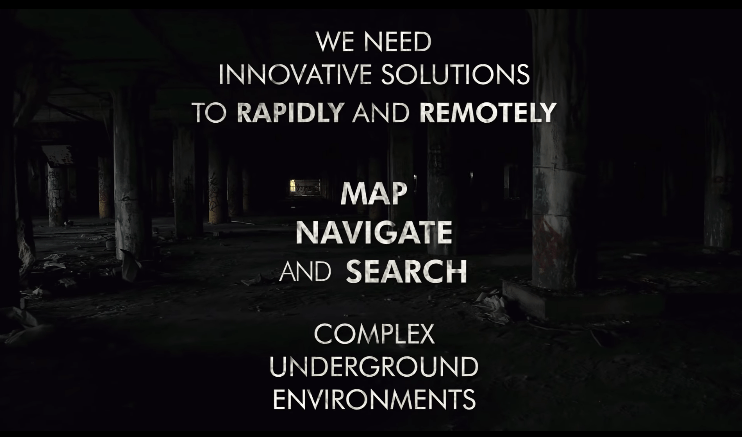Robotics is starting to attract venture capital at an accelerating rate. There is significant growth in VC investment on both coasts, and the equity markets are starting to take notice. RoboStox is a growing ETF that focuses on robotics companies. Accelerator programs are clamoring for robotics-based ventures. Seed funding, and even Round A funding, is becoming increasingly easier to come by for robotics companies, especially when compared to 10 years ago.
Of course, this is good for the community overall. The willingness of VCs to risk capital on technologies and business models that just 10 years ago had trouble attracting any interest is a strong indicator of industry maturation.
Since we are a small sized, growing robotics company, I get nearly weekly emails from VC analysts who want to talk. 99% of the time these are folks who are scouting a very broad area and reaching out to lots of folks (remember, these are the VC analysts, not the VCs themselves). But it indicates that for companies that are revenue positive and profitable, growth funding is available.
Yet… I continue to resist that, and have focused strongly on organic growth and bootstrapping. Why? I want to take a bit of time to discuss that. I’m hoping it’s useful for others, but really, (like most writing), it’s a way for me to organize my thoughts and reflect on the decisions I’ve made while building Neya. It’s not to say I’ll never be open to the right growth partner. In fact, I think strong, significant growth will almost require that. However, there are a lot of advantages to going it “alone” in the beginning.
NOTE: We’re not a typical product company. We do a variety of unmanned systems activities, including R&D, commercial services, etc. So the argument can be made that this type of company has different challenges compared to a hardware-intensive product company. And it’s certainly true that if you are in the medical space and have to deal with the FDA, etc, bootstrapping is darn hard. However, I don’t think any of that diminishes the values of lessons you can learn through a bootstrap experience.
So here’s what I’ve noticed in the past 5 years of growing Neya. By the way.. I’m not the first to learn these lessons, and I won’t be the last. There are a lots of articles, books, and blogs dedicated to bootstrapping. Some of my favorites are at the end. This is intended to represent my own personal views and experience.
1. You’ll learn the importance of cash. Spending money that depends on revenue you generate is a lot different than spending someone else’s capital. It forces you to be disciplined about capital investments, internal R&D, and general business expenses. This discipline extends, then, to hiring, customer management, operations management, and all areas of business. You will be more careful.
2. You won’t focus too early. Going for the BHAG before you know your industry, your market, your competitors, and the technical challenges you will face is a recipe for disaster. Bootstrapping forces you to diversify, to look at many potential avenues of growth, and to devote time to all of them. Is that hard? It sure is. But you can’t put all your eggs in one basket. Not when you’re starting out. That reduces the chance of outright failure, and gives you time to figure out your niche.
3. You’ll love the freedom. Answering to employees and customers is enough work. Why add VCs on top of it? The best part about this is that while VCs may depend on you for ROI, your employees depend on you for leadership and their livelihoods; and customers depend on you to help them solve problems.
4. Revenue is nice. Profit is better. If you are generating revenue, and you are bootstrapping, you are almost always, almost by definition, going to be profitable. If you’re not, you won’t last. And, you decide how to use the profit. You decide where to re-invest it. You decide how to distribute it.
5. Your runway is really really short. On the one hand, early on, this may keep you from focusing on the big vision and long term picture. You’ll be too busy surviving. On the other hand, you’ll be surviving. And once you get to a stage of growth where you finally have time to think strategically, you’ll be worrying about how to grow an already healthy company.
6. Growth is earned, not purchased. Natural, organic growth doesn’t require steroids.
I know a lot of this sounds like I’m anti-VC. I’m not. In many industries, it’s absolutely critical. In all industries it plays a vital role. Seed funding allows many entrepreneurs to task a risk they may not otherwise be able to, and great companies are born because of it. In many industries, the only way to scale is with large capital investments – that is inherently hard to bootstrap.
My point isn’t about being anti-VC. It’s about being pro-bootstrapping. In fact, if I were ever to start another company, what I know what I’ve learned from bootstrapping would make me a much better steward of someone else’s money than if I hadn’t learned these lessons.
So… It doesn’t matter if you fail. I really believe that the first time you try to build a company, you should do it on your own. If you succeed, great! If you fail, you’ll learn more this way than you will if you fail with someone else’s money.
There’s a lot of advice out there on bootstrapping. Some good. Lots bad. Here’s what I’ve found useful:
- Starting A Business with No Money: A Bootstrapping Manifesto
- 8 Ways Bootstrapping Makes You A Better Entrepreneur
- Bootstrapping Your Startup: 7 Hard-Earned Tips From Real Entrepreneurs
- How we bootstrapped our company from zero to $10M: Five key tips to consider
- The Biggest Threat to Your Bootstrapped Business




